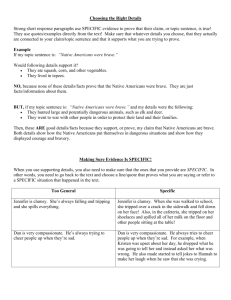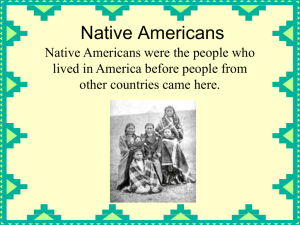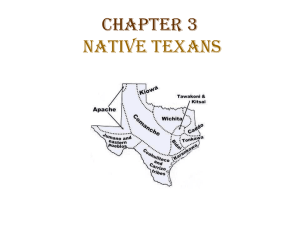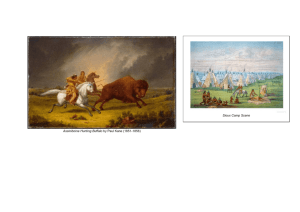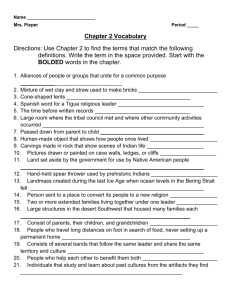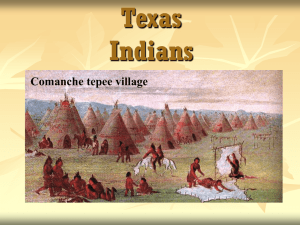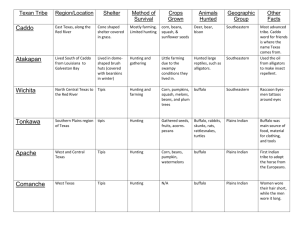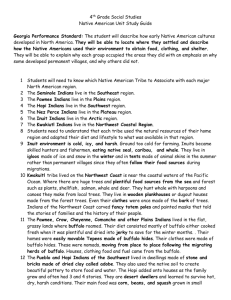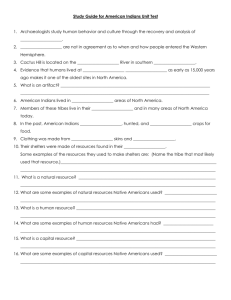GT/Pre AP Chapter 4 Reveiw
advertisement
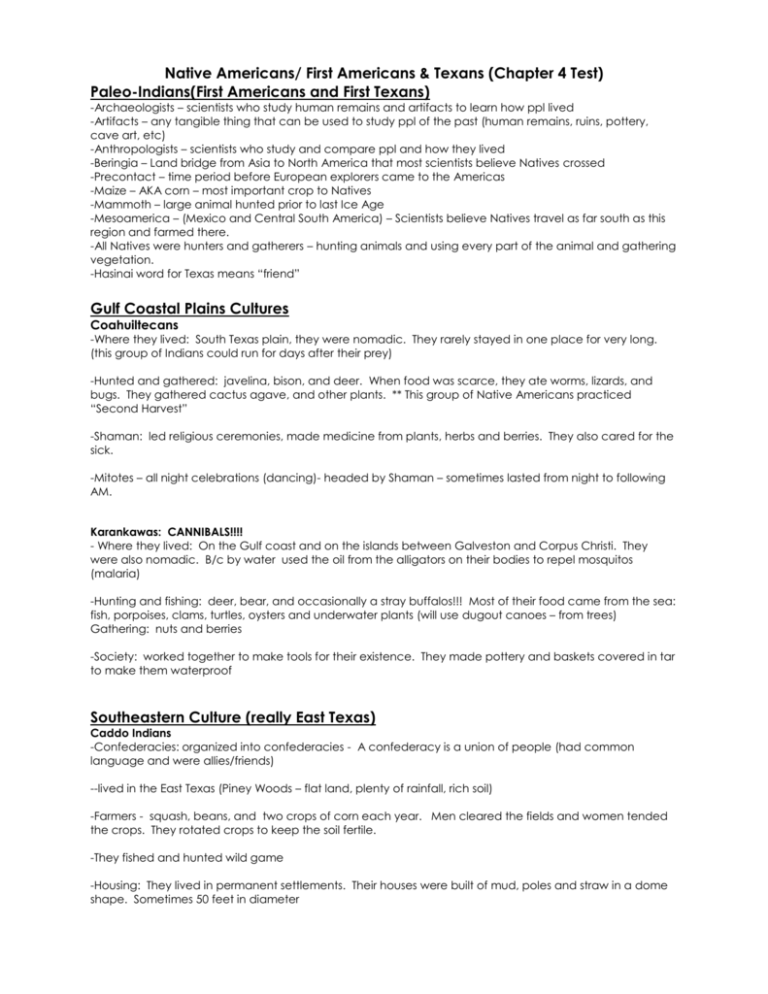
Native Americans/ First Americans & Texans (Chapter 4 Test) Paleo-Indians(First Americans and First Texans) -Archaeologists – scientists who study human remains and artifacts to learn how ppl lived -Artifacts – any tangible thing that can be used to study ppl of the past (human remains, ruins, pottery, cave art, etc) -Anthropologists – scientists who study and compare ppl and how they lived -Beringia – Land bridge from Asia to North America that most scientists believe Natives crossed -Precontact – time period before European explorers came to the Americas -Maize – AKA corn – most important crop to Natives -Mammoth – large animal hunted prior to last Ice Age -Mesoamerica – (Mexico and Central South America) – Scientists believe Natives travel as far south as this region and farmed there. -All Natives were hunters and gatherers – hunting animals and using every part of the animal and gathering vegetation. -Hasinai word for Texas means “friend” Gulf Coastal Plains Cultures Coahuiltecans -Where they lived: South Texas plain, they were nomadic. They rarely stayed in one place for very long. (this group of Indians could run for days after their prey) -Hunted and gathered: javelina, bison, and deer. When food was scarce, they ate worms, lizards, and bugs. They gathered cactus agave, and other plants. ** This group of Native Americans practiced “Second Harvest” -Shaman: led religious ceremonies, made medicine from plants, herbs and berries. They also cared for the sick. -Mitotes – all night celebrations (dancing)- headed by Shaman – sometimes lasted from night to following AM. Karankawas: CANNIBALS!!!! - Where they lived: On the Gulf coast and on the islands between Galveston and Corpus Christi. They were also nomadic. B/c by water used the oil from the alligators on their bodies to repel mosquitos (malaria) -Hunting and fishing: deer, bear, and occasionally a stray buffalos!!! Most of their food came from the sea: fish, porpoises, clams, turtles, oysters and underwater plants (will use dugout canoes – from trees) Gathering: nuts and berries -Society: worked together to make tools for their existence. They made pottery and baskets covered in tar to make them waterproof Southeastern Culture (really East Texas) Caddo Indians -Confederacies: organized into confederacies - A confederacy is a union of people (had common language and were allies/friends) --lived in the East Texas (Piney Woods – flat land, plenty of rainfall, rich soil) -Farmers - squash, beans, and two crops of corn each year. Men cleared the fields and women tended the crops. They rotated crops to keep the soil fertile. -They fished and hunted wild game -Housing: They lived in permanent settlements. Their houses were built of mud, poles and straw in a dome shape. Sometimes 50 feet in diameter -Interactions with other peoples: Fought other Native Americans, European settlers and sometimes other Confederacies. They were friendly with the European to trade with. -Women were important in society – made important decision about family and lineage was matrilineal Pueblo Culture(West Texas) Jumano Indians -Housing: lived in individual adobe (sun-baked mud and straw) homes detached from one another. Adobes cool in summer months -Where they lived: lower river valleys of the W. Rio Grande region between El Paso and the Big Bend area. -Some were Farmers: squash beans, corn, and cotton. When there was no rain and their crops failed, they ate mesquite beans, prickly pear tunas, and cactus. Lived near Rio Grande b/c would overflow and fill fields with water -Some were nomads and moved onto the plains of western and central TX and hunted deer and buffalo - Died off b/c of Euorpean disease, drought or attacks from Apache Plains Indians- NOMADIC!!! Importance of the horse and buffalo -How they got here: Crossed Bering land bridge before becoming extinct on this continent before the last Ice Age. Spaniards reintroduced them to the Americas around 1500. The horse was swift and strong, and fed off whatever grass was available. -With the horse, peoples of the Plains culture became outstanding hunters in peace and dangerous foes in war. -Plains peoples depended on the buffalo for food. The destruction of the buffalo also meant the end of the Plains people’s way of life. . Comanche Indians -Where they lived: On the prairies, plain, and plateaus of western Texas called the Comancheria. -Society: Divided into many groups. Each group had its own leader and a council of older men what make important decisions. **No individual group had the right to speak for all Comanches. -Hunting: bear, elk, antelope and buffalo. Buffalo hunt involved most of the group. -War: fought to keep other Indians and white settlers out of the Comancheria. **fought to take enemies’ horses -What happened to them?: Continued to fight to keep their land until 1875. **Destruction of the buffalo herd and loss of horses forced them to accept reservation life in Oklahoma. Kiowa Indians -Where they lived: shared the plains with their allies the Comanche. All men were apart of a warrior society -How they lived: families lived in teepees made of tanned hides
